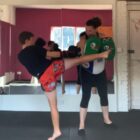Progressive training means that you keep gradually increasing the intensity of your workout, so you always experience a high degree of challenge in your training. If you keep lifting the same weights week after week, you aren’t going to get much stronger. Progressive training helps ensure that you remain in the sweet spot of challenge, so you grow stronger in less time than you would otherwise.
The golden rules of Progressive Overload
- The Coach uses the principle of progressive overload by carefully increasing the training stimulus without exceeding your bodies capability to recover. That’s why it’s so important you give honest feedback to your Coach after your training session. Two rules are crucial in order for progressive overload to be as optimal as possible:
- We only increase one thing at a time: We won’t up the intensity, increase the volume and ask you to perform super slow repetitions all at once. Rather, we change one training variable at a time and progress slowly, but steady without overstressing the system.
- We increase volume before intensity: Volume is the amount of reps and sets you perform. Intensity is the resistance, either your bodyweight, or the actual weight. In order to manage fatigue and decrease the risk of under-recovery, we overload on volume first, before we increase the intensity.
Progressive overload can happen in 4 ways:
- Increasing Intensity: Lifting more weight in your next training session.
- Increasing Volume: Doing more reps, sets or exercises for a certain muscle group in your next training.
- Increasing Frequency: Doing more training sessions than the week before.
- Increasing Tension: Increasing the duration of each repetition within an exercise. A common technique in building strength is to prolong the time under tension (TUT) of a muscle by focusing on a 4-second descent (eccentric) when you do a bicep curl for example.






